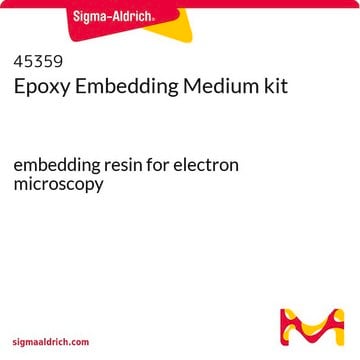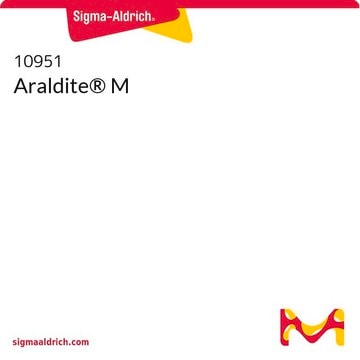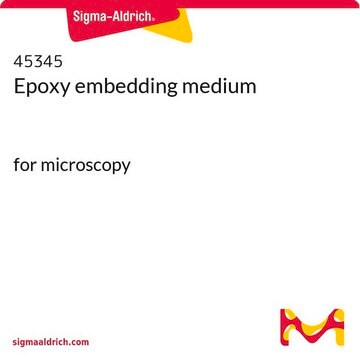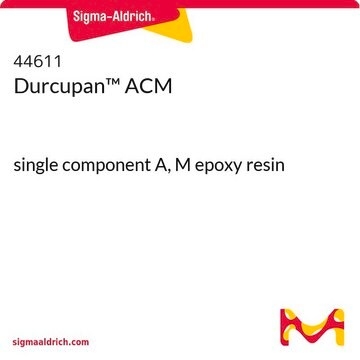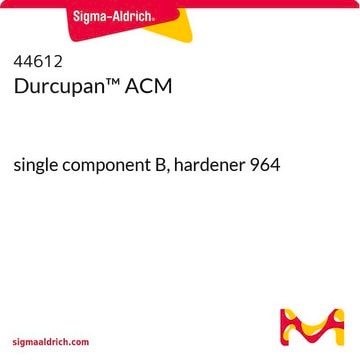Recommended Products
General description
Araldite is an epoxy resin commonly used for embedding. It is basically free from polymerization damage and the plastic does not sublime in the microscope, hence providing continual support and preservation of fine detail. It is composed of araldite M or CY 212, dodecenyl succinic anhydride, dibutyl phthalate and 2,4,6-tridimethylamine methyl phenol.
Application
Araldite® was used to study electrochemical detection of dopamine and ascorbic acid neurotransmitters focusing on miniaturization of a graphite-epoxy and synthetic zeolite-modified graphite-epoxy composite macroelectrode as a quasi-microelectrode. It was also used in production of microfluidic chips using extremely low cost chemicals and equipment which was validated by producing monodisperse polymeric microparticles for drug delivery and hydrogel microfibers for cell embedding.
Legal Information
Araldite is a registered trademark of Huntsman Advanced Materials Inc.
signalword
Warning
hcodes
Hazard Classifications
Acute Tox. 4 Oral - Eye Irrit. 2 - Skin Irrit. 2
Storage Class
10 - Combustible liquids
wgk_germany
WGK 3
flash_point_f
Not applicable
flash_point_c
Not applicable
ppe
Eyeshields, Faceshields, Gloves, type ABEK (EN14387) respirator filter
Choose from one of the most recent versions:
Already Own This Product?
Find documentation for the products that you have recently purchased in the Document Library.
Simultaneous/selective detection of dopamine and ascorbic acid at synthetic zeolite-modified/graphite-epoxy composite macro/quasi-microelectrodes.
Ilinoiu EC
Sensors, 13 (6), 7296-7307 (2013)
S Focaroli et al.
Lab on a chip, 14(20), 4007-4016 (2014-08-22)
The present paper describes the production of microfluidic chips using an approach based on shrinkable biocompatible polymers (i.e. agarose) for the production of size controlled microfluidic channels. In addition, all steps of chip production were carried out using an inexpensive
Astrid M Parsons et al.
Dalton transactions (Cambridge, England : 2003), 48(29), 10945-10952 (2019-06-06)
The active fragment [Tp'Rh(CNneopentyl)], generated from the precursor Tp'Rh(CNneopentyl)(PhN[double bond, length as m-dash]CNneopentyl), underwent oxidative addition of substituted ketones and esters resulting in Tp'Rh(CNneopentyl)(R)(H) complexes (Tp' = tris-(3,5-dimethylpyrazolyl)borate). These C-H activated complexes underwent reductive elimination at varying temperatures (24-70 °C)
In Situ Hybridization in Electron Microscopy.
Morel G
Science, 174-175 (2001)
Biological Techniques.
Yadav P.R.
Science, 79-80 (2006)
Our team of scientists has experience in all areas of research including Life Science, Material Science, Chemical Synthesis, Chromatography, Analytical and many others.
Contact Technical Service
